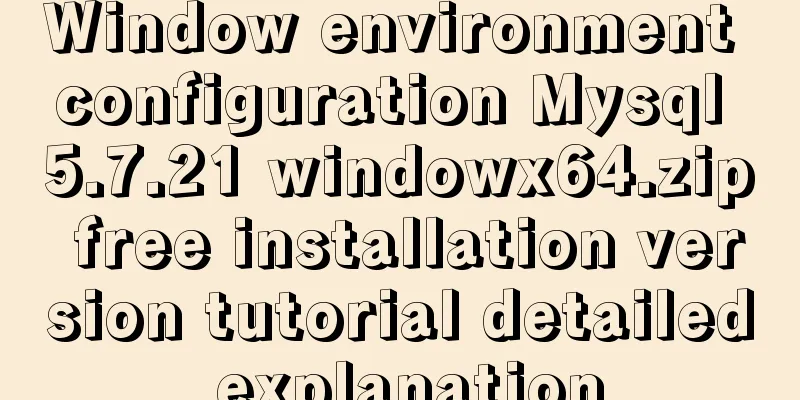Use dockercompose to build springboot-mysql-nginx application

|
In the previous article, we used Docker to build a spring-boot application, which built the compiled jar package into the image. This article runs spring-boot together with the database as a set of docker services. Here I just record my own operations. For the complete running code, please see the content in reference 1 in "Reference". Main steps:
Build a simple springboot application Make a web application to count the number of IP addresses that visit the site. And store it in mysql database, here we use jpa to access the database. rely <parent> <groupId>org.springframework.boot</groupId> <artifactId>spring-boot-starter-parent</artifactId> <version>2.0.0.RELEASE</version> </parent> Dependencies of web, jpa, mysql, and tset libraries
<dependencies>
<dependency>
<groupId>org.springframework.boot</groupId>
<artifactId>spring-boot-starter-web</artifactId>
</dependency>
<dependency>
<groupId>org.springframework.boot</groupId>
<artifactId>spring-boot-starter-data-jpa</artifactId>
</dependency>
<dependency>
<groupId>mysql</groupId>
<artifactId>mysql-connector-java</artifactId>
</dependency>
<dependency>
<groupId>org.springframework.boot</groupId>
<artifactId>spring-boot-starter-test</artifactId>
<scope>test</scope>
</dependency>
</dependencies>
Configuration Files spring.datasource.url=jdbc:mysql://localhost:3306/test spring.datasource.username=root spring.datasource.password=root spring.datasource.driver-class-name=com.mysql.jdbc.Driver spring.jpa.properties.hibernate.hbm2ddl.auto=update spring.jpa.properties.hibernate.dialect=org.hibernate.dialect.MySQL5InnoDBDialect spring.jpa.show-sql=true Core code
@RestController
public class VisitorController {
@Autowired
private VisitorRepository repository;
@RequestMapping("/")
public String index(HttpServletRequest request)
{
String ip = request.getHeader("X-Real-IP");
if(ip== null || "".equals(ip))
{
ip = request.getRemoteAddr();
}
Visitor visitor = repository.findByIp(ip);
if(visitor == null)
{
visitor = new Visitor();
visitor.setIp(ip);
visitor.setTimes(1L);
}
else
{
visitor.setTimes(visitor.getTimes()+1);
}
repository.save(visitor);
return "ip:"+visitor.getIp()+" "+visitor.getTimes()+" times.";
}
}
Entity Class
@Entity
public class Visitor {
@Id
@GeneratedValue
private Long id;
@Column(nullable=false)
private Long times;
@Column(nullable=false)
private String ip;
// get, set methods omitted}
Repository layer code refers to jpa related content. The local database is opened, and the password is configured above. After running with mvn spring-boot:run, you can see the number of IPs, which increases automatically after each statistics. Docker Compose Configuration File Create a new docker-compose.yaml file as follows: version: '3' services: nginx: container_name: v-nginx image: nginx:1.13 restart: always ports: - 80:80 -443:443 volumes: - ./nginx/conf.d:/etc/nginx/conf.d mysql: container_name: v-mysql image:mysql/mysql-server:5.7 environment: MYSQL_DATABASE: test MYSQL_ROOT_PASSWORD: root MYSQL_ROOT_HOST: '%' ports: - "3306:3306" volumes: - ./mysqldata:/var/lib/mysql restart: always app: restart: always build: ./app working_dir: /app volumes: - ./app:/app - ~/.m2:/root/.m2 expose: - "8080" depends_on: - nginx -mysql command: mvn clean spring-boot:run -Dspring-boot.run.profiles=docker Mainly explain this configuration file and add related configuration in the file system. There are three services under services: nginx, mysql, and app. The purpose of the volumes configuration under nginx is to directly overwrite the nginx configuration file we wrote to the default nginx configuration file in the container. The purpose of the volumes configuration under MySQL is to map the MySQL data files to the local mysqldata directory. When the container is deleted, the data remains. The function of the volumes configuration under app: The first line maps the code file to the container. The second line maps the Maven repository file to the local one. After deleting the container, you can build it again without re-downloading dependent packages. The command is to compile and run the project in the container, using Docker profiles. So we have to add the file
server {
listen 80;
charset utf-8;
access_log off;
location / {
proxy_pass http://app:8080;
proxy_set_header Host $host:$server_port;
proxy_set_header X-Forwarded-Host $server_name;
proxy_set_header X-Real-IP $remote_addr;
proxy_set_header X-Forwarded-For $proxy_add_x_forwarded_for;
}
location /static {
access_log off;
expires 30d;
alias /app/static;
}
}
Deployment Validation Copy the entire file to the server and run it using The above is the full content of this article. I hope it will be helpful for everyone’s study. I also hope that everyone will support 123WORDPRESS.COM. You may also be interested in:
|
<<: Briefly describe the difference between Redis and MySQL
>>: js implements the pop-up login box by clicking the pop-up window
Recommend
VSCode configuration Git method steps
Git is integrated in vscode, and many operations ...
Implementation of form submission in html
Form submission code 1. Source code analysis <...
CSS to achieve glowing text and a little bit of JS special effects
Implementation ideas: Use text-shadow in CSS to a...
How to query or obtain images in a private registry
Docker queries or obtains images in a private reg...
Causes and solutions for MySQL data loss
Table of contents Preface Problem Description Cau...
Detailed steps to implement the Excel import function in Vue
1. Front-end-led implementation steps The first s...
Solve nginx "504 Gateway Time-out" error
Students who make websites often find that some n...
A pitfall and solution of using fileReader
Table of contents A pitfall about fileReader File...
Uniapp implements DingTalk scan code login sample code
Since Uniapp does not have DingTalk authorization...
MySQL 5.7.18 Archive compressed version installation tutorial
This article shares the specific method of instal...
Several ways to switch between Vue Tab and cache pages
Table of contents 1. How to switch 2. Dynamically...
Manually implement the two-way data binding principle of Vue2.0
In one sentence: Data hijacking (Object.definePro...
Detailed explanation of how to write mysql not equal to null and equal to null
1. Table structure 2. Table data 3. The query tea...
The leftmost matching principle of MySQL database index
Table of contents 1. Joint index description 2. C...
How to prevent hyperlink redirection using JavaScript (multiple ways of writing)
Through JavaScript, we can prevent hyperlinks fro...









